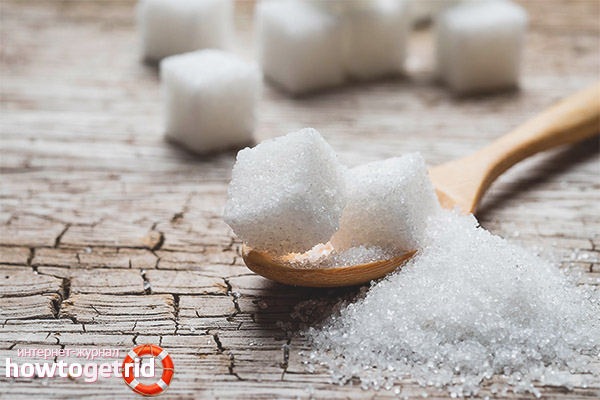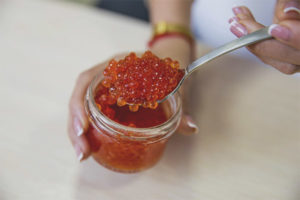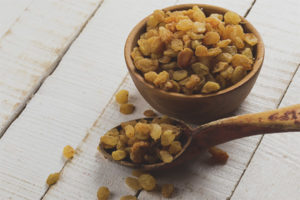The content of the article
During lactation, a woman often has a need for sweets. This is easily explained - the body spends a lot of energy on the production of nutritious and healthy milk, and sweet food best makes up for it. Sugar, in particular, contains simple carbohydrates, which quickly break down into energy and nourish the body under stress.
Of course, it is impossible to abuse the product during breastfeeding, as the child may experience diathesis and other problems. In many cases, regular granulated sugar is easy to replace with other products that will fill mom’s need for treats.
Sugar Composition
Before assessing the benefits or harms of sugar, you need to understand what it is made from.
The pure product is sucrose, which combines fruit (fructose, glucose) and milk (lactose) sugar. All these components are responsible for the normal functioning of the mother and baby.
Lactose, for example, saturates colostrum and breast milk with a large amount of carbohydrates, and also normalizes the development of the natural intestinal microflora, which prevents dysbiosis and colic. Milk sugar also provides the absorption of calcium, which is so necessary for the development of the bone and muscle system of the crumbs, his teeth. Lactose also contributes to the absorption of iron, various B vitamins. The derivative component of galalactose directly affects the formation and strengthening of the brain substance in the baby.
Despite all these valuable properties, the crystalline sugar that we buy in stores undergoes phased processing with chemical components. Unfortunately, in most cases, there is practically no carbohydrate left in it, and the lactose content is minimized. Such a product is very difficult to assimilate even by the mother's body, not to mention the fragile children's stomach. Oversaturation with sugar can lead to impaired functioning of the endocrine system - for example, to a decrease in glucose tolerance.
There is only one conclusion: during lactation, it is not so much sugar in its pure form that matters, but its carbohydrate component (lactose, fructose and glucose). And they, by the way, are found in abundance in fruits, berries, vegetables and dairy products.
The benefits of sugar in lactation
During breastfeeding, the product performs the following important functions.
- Increases the level of "hormones of happiness" - serotonin and endorphin. The latter eliminate the feeling of physiological and psychological fatigue, relieve headaches and other cramps, improve sleep quality. By feeding your baby sweet milk, you can expect him to be more calm at night and day.
- Normalizes the liver. Sugar improves its filtering function, which allows the body to get rid of toxins, metabolites and poisons.
- Promotes the absorption of vitamins and minerals by female and children's organisms.
- Soothes the nervous system. Sweet tea is the best remedy for nervousness, depression and irritability. If a baby cries for several days for no reason, he may be lacking sugar components.
- Improves lactation. Sweet milk is to the taste of the baby, thanks to which the normal sucking reflex is restored. The baby at the same time eats up and receives the necessary energy to know the world.
- Stimulates brain function. Sucrose has a positive effect on the functioning of the cerebral hemispheres, which are also responsible for the concentration and attention of the baby, fine motor skills, its ability to absorb and process information, general development and socialization.
- Charges the body with "fast" energy.Simple carbohydrates in sugar break down almost instantly, which gives a powerful release of energy.
Some mothers deliberately avoid the use of sugar during breastfeeding, fearing infant diathesis and, of course, gaining extra pounds. Doctors categorically prohibit the complete exclusion of sugar from the diet for the following reasons:
- There is chronic fatigue and a breakdown, drowsiness.
- The brain slows down, which leads to impaired attention and memory impairment.
- Disrupted blood flow in the spinal cord.
- Sclerotic changes develop in the vascular system (density and brittleness increase, elasticity decreases).
How to replace
Since crystalline granulated sugar does not contain the required amount of carbohydrates and lactose, it is advisable to replace it with natural sources of these components: fruits and dried fruits, berries and vegetables, dairy and sour-milk products.
As a dietary supplement, the spice can be replaced with other options.
- Cane sugar. Unlike usual, it contains both B vitamins, minerals and the required level of carbohydrates. During lactation, it is considered harmless and easily digestible, due to which it does not “clog” the vulnerable children's digestive system.
- Fructose. Mena is a caloric version of a dietary supplement, which is also easily digested. By sweetness, it differs little from sucrose and is suitable even for the nutrition of diabetics.
- Stevia. A vegetable version of a sweetener that satisfies the need for sweets and does not burden the digestive tract.
When choosing a sucrose substitute for breastfeeding, avoid the following options: aspartame, xylitol, saccharin, sorbitol, cyclomat, and other synthetic additives. It is practically not absorbed by the child's body, it is littered with slags and metabolites. Aspartame, moreover, is broken down into methyl alcohol - a pure poison for the body. Cyclomat has long been banned by European countries. Saccharin is perfectly absorbed into milk, but it is practically not digested by the stomach, which can make the entire digestive system “become”.
Restrictions for use
How much sugar can be consumed during lactation can be calculated by the mother herself, observing the reaction and behavior of the baby. Symptoms that indicate an excess of sugar in the diet of crumbs: gas and colic, increased tearfulness, rejection of breast milk, restless sleep, diathesis (redness and rashes on the body).
What is sugar harmful to the body of the mother and child:
- Disruption of the endocrine organs, slowing down the metabolism.
- Deterioration of the oral cavity (simple carbohydrates are an ideal medium for the propagation of pathogenic agents, including carious bacteria).
- Washes calcium, which can damage teeth and bones.
- Increases the acidity of the oral cavity.
- The risk of developing candidiasis in mother and child.
- The likelihood of diathesis (food allergy) in infants.
- Weight gain by mom and baby.
- The risk of impaired glucose tolerance, the development of gestational or diabetes.
- Digestive disorders in the baby (colic and flatulence, constipation, pain).
- Overexcitation of the nervous system, which affects the quality of falling asleep and the duration of sleep of the child.
A common symptom is a sugar allergy. Redness, rash, and slight swelling are noted on the skin of the crumbs. The baby is worried about itching and burning, as a result of which he will supposedly cry unreasonably all day. Most often, diathesis occurs in infants in the first 3 months of lactation.
A responsible mother should understand that, along with milk, sugar enters the body of the crumbs and produces both positive and negative effects on it.That is why it is necessary to control the consumption of sugar and the dosage, watch carefully not the reaction of your baby and, if problems are found, replace the food supplement with another component.
Video: is it possible for a sweet nursing mother













Submit